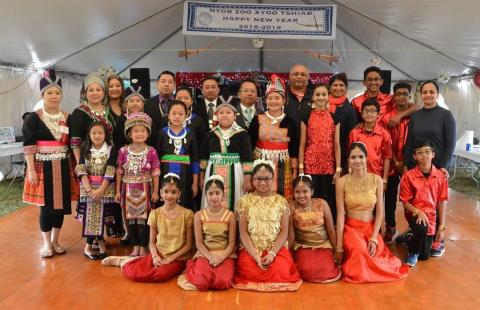What were the specific goals of this creative economy project? Describe the community development challenge or opportunity that your project was designed to address:
The intercultural collaboration seed grants were offered to encourage varied culturally-specific organizations to work together and establish fruitful partnerships. With over 40+ Rhode Island Expansion Arts alumni, many organizations have the opportunity to collaborate, but need avenues for support. Intercultural collaboration seed grants promoted partnerships and allowed organizations to define and align institutional values. Recipient organizations designed and implemented programs such as multicultural dancing at traditional new years festivals that exposed audiences to new and varied cultural practices. Grant recipients also attended events together, including programs featuring keynote speakers like Carlton Turner of Alternate Roots and guests from the National Association of Latino Arts and Culture (NALAC).
Who was involved in this project and what did they do? (be sure to include the partners from outside of the creative sector and how local voices were included):
The Rhode Island Expansion Arts Program’s 2019-2021 cohort consisted of the RI Cape Verdean Heritage Committee, The Colombian American Cultural Society, the India Association of Rhode Island, and the Laotian Community Center of Rhode Island.
The Colombian American Cultural Society of Rhode Island used their intercultural collaboration seed grant to work with the Puerto Rican Institute for the Arts and Advocacy to introduce Afro-Caribbean and Colombian dance traditions to students and their families. The project was organized to strengthen and unify the Central Falls, RI community, where the majority of Latinx residents are of Colombian and Puerto Rican descent. Both organizations offered workshops to students and facilitated organized performances at events such as the Day of Race.
The India Association of Rhode Island used their intercultural collaboration seed grant to collaborate with the Hmong United Association of Rhode Island to celebrate important cultural events such as Diwali (Festival of Lights), India Day, and the Hmong New Year. Diwali honors the diverse social, cultural, and educational heritage of India while India Day celebrates India’s independence. The Hmong New Year is a colorful festival that honors the unique culture and history of the Hmong people. The New Year celebration is the biggest festival of the year for the Hmong community in Rhode Island. By organizing these events together, Hmong and Indian heritages were recognized and celebrated with large cross-cultural audiences from both communities.
How does this project relate to a larger community development strategy?
For the intercultural collaboration seed grant recipients, grants connected two culturally-specific organizations together, promoting rewarding partnerships and creating a healthier ecosystem among diverse communities across the state. Organizations such as the Laotian Community Center have established fruitful partnerships with nationally recognized organizations such as the Lao Heritage Foundation, based in Washington, DC. The Laotian Community Center also shares a master music teacher with five other Laotian communities located in various cities in the United States such as San Diego, CA and Philadelphia, PA.
Other recipients of the intercultural collaboration seed grants established partnerships and connections with local institutions with similar interests in youth development. The collective work of the intercultural collaboration seed grants and the youth development grants elevated the visibility of diverse communities in Rhode Island and built community cohesion while teaching civic skillsets and dispositions.
